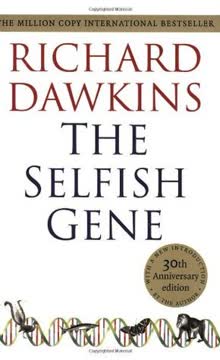가지 주요 요점
1. 지리적 요인이 인간 사회의 불평등한 발전을 형성했다
"역사는 생물학적 차이 때문이 아니라 사람들의 환경 차이 때문에 다른 경로를 따랐다."
환경 결정론. 이 책은 인간 사회 간의 발전 속도의 큰 차이가 인구 간의 내재적 차이 때문이 아니라 주로 지리적 및 환경적 요인 때문이라고 주장한다. 이러한 요인에는 다음이 포함된다:
- 가축화 가능한 식물과 동물의 가용성
- 대륙의 형태와 방향 (동서 축 vs. 남북 축)
- 아이디어와 기술의 확산에 대한 장벽 (사막, 산, 바다)
- 농업과 인구 성장에 적합한 기후와 생태
이러한 지리적 이점 또는 단점은 사회를 다른 궤도로 설정하여 오늘날까지 지속되는 기술, 정치 조직 및 경제력의 격차를 초래했다.
2. 식량 생산이 복잡한 문명의 촉매였다
"식량 생산의 채택은 시작되면 점점 더 빨라지는 긍정적 피드백 주기에서 스스로를 촉매하는 자가 촉매 과정을 예시한다."
농업 혁명. 사냥과 채집에서 농업과 가축 사육을 통한 식량 생산으로의 전환은 인류 역사에서 중요한 전환점이었다. 이 변화는 다음을 가능하게 했다:
- 인구 증가와 밀집화
- 노동의 전문화
- 기술과 공예의 발전
- 사회적 계층과 복잡한 정치 구조의 출현
식량 생산은 식량 잉여를 창출하여 더 큰 인구와 장인, 군인, 통치자와 같은 비식량 생산 전문가를 지원했다. 이 긍정적 피드백 루프는 사회 발전을 가속화하고 초기 문명의 부상을 이끌었다.
3. 식물과 동물의 가축화가 사회적 발전을 이끌었다
"모든 작물은 야생 식물 종에서 발생했다. 특정 야생 식물이 어떻게 작물로 변했을까?"
인간과 가축의 공진화. 가축화 과정은 인간에게 유익한 특성을 가진 야생 종을 장기적이고 종종 무의식적으로 선택하는 과정이었다. 주요 요점은 다음과 같다:
- 가축화는 여러 세계 지역에서 독립적으로 발생했다
- 일부 지역은 가축화에 더 적합한 야생 종을 가지고 있었다
- 동물 가축화는 식량, 노동, 운송 및 비료를 제공했다
- 식물 가축화는 신뢰할 수 있는 식량 공급원과 잉여를 제공했다
주요 가축화:
- 작물: 밀, 쌀, 옥수수, 감자
- 동물: 양, 염소, 소, 돼지, 말
유라시아의 가축화 가능한 종의 가용성은 그곳의 사회에 복잡한 문명을 발전시키는 데 중요한 출발점을 제공했다.
4. 유라시아의 동서 축은 기술 확산을 촉진했다
"유라시아의 동서 축은 고대에 이러한 중국의 동물과 작물이 서쪽으로 확산되는 것을 허용했으며, 서아시아의 가축화도 동쪽으로 중국에 확산되었다."
대륙의 방향이 중요하다. 유라시아의 주로 동서 축은 유사한 위도와 기후를 가로질러 작물, 동물 및 기술의 확산을 용이하게 했다. 이 확산은 다음과 같은 이유로 중요했다:
- 한 위도에 적응한 식물과 동물은 종종 유사한 위도에서 번성할 수 있었다
- 유사한 도전에 직면한 사회 간에 기술과 아이디어가 더 쉽게 확산될 수 있었다
- 연속적인 대륙은 무역과 문화 교류를 촉진했다
반면, 아메리카와 아프리카의 남북 축은 확산에 장벽을 만들었으며, 작물과 동물은 확산되면서 새로운 기후에 적응해야 했다. 대륙 방향의 이러한 차이는 유라시아의 기술 및 사회 발전을 가속화했다.
5. 총, 세균, 강철이 유라시아인에게 정복의 이점을 제공했다
"서로 다른 사람들 간의 상호작용의 역사는 정복, 전염병 및 집단 학살을 통해 현대 세계를 형성했다."
정복의 근접 원인. 식량 생산과 기술 발전에서 유라시아의 출발점은 다른 사회와의 만남에서 세 가지 주요 이점을 제공했다:
- 총: 우수한 무기와 군사 기술
- 세균: 다른 인구를 황폐화시킨 질병에 대한 면역력
- 강철: 고급 금속 공학 및 도구
이러한 이점은 내재적 우월성 때문이 아니라 밀집된 인구, 동물 가축화 및 기술 교환의 더 긴 역사 때문이었다. 이러한 요인의 결합은 유라시아인들이 정복과 식민지를 통해 세계의 많은 부분을 지배할 수 있게 했다.
6. 문자 체계는 경제적 및 정치적 필요에서 진화했다
"문자는 무기, 미생물 및 중앙집권적 정치 조직과 함께 정복의 현대적 도구로 행진했다."
문해력의 힘. 문자 체계의 발전은 복잡한 사회의 필요와 밀접하게 관련되었다:
- 무역 및 과세를 위한 기록 보관
- 법률 및 종교 문서의 성문화
- 장거리 통신
문자 체계는 일반적으로 다음에서 진화했다:
- 그림 문자 (사물을 나타냄)
- 표의 문자 (단어 또는 개념을 나타냄)
- 음절 문자 (음절을 나타냄)
- 알파벳 (개별 소리를 나타냄)
문자의 확산은 종종 정복이나 무역을 통해 이루어졌으며, 사회 간 지식과 기술의 확산을 더욱 가속화했다.
7. 사회적 복잡성은 경쟁과 혁신을 통해 증가했다
"이 모든 폴리네시아 사회 간의 차이는 동일한 조상 문화를 가진 인구에 대한 다양한 환경과 창립 효과의 결과로 단 3,200년 만에 발전했다."
사회의 분기 진화. 인간 인구가 다양한 환경에 퍼지고 정착함에 따라 다른 사회 구조와 기술을 개발했다:
- 족장제와 국가가 더 단순한 부족 조직에서 출현했다
- 노동의 전문화는 기술 혁신을 이끌었다
- 사회 간 경쟁은 추가 발전을 촉진했다
이 과정은 폴리네시아 사회의 다양한 결과가 공통 조상 문화에서 발전한 것처럼 균일하지 않았다. 환경적 제약, 인구 규모 및 고립은 사회가 달성할 수 있는 복잡성 수준을 결정하는 데 중요한 역할을 했다.
8. 환경적 차이는 다양한 발전 경로를 이끌었다
"역사의 광범위한 패턴은 다른 대륙의 사람들의 장기 역사 간의 차이이다."
생태 결정론. 이 책은 환경적 요인이 다른 사회의 궤적을 크게 결정했다고 주장한다:
- 비옥한 강 계곡은 초기 농업을 지원했다 (예: 메소포타미아, 나일강, 인더스강)
- 섬 사회는 해양 기술을 개발했다 (예: 폴리네시아)
- 가혹한 환경은 인구 성장과 기술 발전을 제한했다 (예: 호주)
이러한 환경적 차이는 다음을 초래했다:
- 인구 성장률의 차이
- 사회적 복잡성의 다양한 수준
- 불균등한 기술 발전
- 다양한 문화적 관습과 신념
환경과 인간 사회 간의 상호작용은 역사 전반에 걸쳐 관찰된 다양한 문화와 문명의 모자이크를 만들었다.
9. 고립과 인구 규모는 기술적 진보에 영향을 미쳤다
"간단히 말해, 중국의 역사는 동아시아 전체의 역사의 열쇠를 제공한다."
혁신의 요인. 이 책은 사회의 기술적 진보 속도를 결정하는 두 가지 중요한 요인을 식별한다:
- 인구 규모: 더 큰 인구는 더 많은 잠재적 발명가와 혁신을 생산한다
- 연결성: 더 많은 외부 접촉이 있는 사회는 기술을 차용하고 적응할 수 있다
중국의 큰 인구와 상대적 연결성은 초기 혁신의 중심이 되게 했다. 그러나 고립의 시기는 정체를 초래했다. 반면, 태즈메이니아와 같은 작고 고립된 사회는 시간이 지남에 따라 기술을 잃었다.
혁신을 촉진하는 요인:
- 밀집된 인구
- 무역 네트워크
- 사회 간 경쟁
- 새로운 아이디어에 대한 문화적 개방성
이러한 요인의 상호작용은 일부 사회가 기술적 리더가 된 반면, 다른 사회는 뒤처지거나 심지어 퇴보한 이유를 설명한다.
마지막 업데이트 날짜:
FAQ
What's Guns, Germs, and Steel about?
- Explaining disparities: The book explores why different human societies developed at different rates, focusing on environmental, geographic, and biological factors rather than racial differences.
- Yali's question: The narrative is driven by a question from a New Guinean politician, Yali, about why Europeans had more material wealth ("cargo") than New Guineans.
- Interdisciplinary approach: Jared Diamond integrates insights from anthropology, biology, and history to provide a comprehensive understanding of human societal development.
Why should I read Guns, Germs, and Steel?
- Groundbreaking perspective: The book offers a non-racist explanation for inequalities in human societies, challenging traditional narratives of inherent superiority.
- Engaging storytelling: Diamond presents complex ideas in an accessible manner, making it a compelling read for those interested in history, sociology, or human evolution.
- Relevance to modern issues: Understanding historical roots of societal disparities can provide insights into contemporary global inequalities and conflicts.
What are the key takeaways of Guns, Germs, and Steel?
- Geography shapes history: Geographic factors significantly influenced the development of agriculture, technology, and political organization across continents.
- Food production's impact: The transition from hunting-gathering to food production enabled societies to support larger populations and complex political structures.
- Role of germs and technology: Infectious diseases and technological advancements, particularly in weaponry, played pivotal roles in European conquests over other societies.
How does Jared Diamond address Yali's question in Guns, Germs, and Steel?
- Geographic advantages: Societies with favorable geographic conditions, like the Fertile Crescent, had access to more domesticable species, leading to earlier agricultural development.
- Cultural diffusion: The east-west axis of Eurasia allowed for rapid diffusion of technology and ideas, unlike the north-south axes of Africa and the Americas.
- Historical context: Diamond provides a framework to understand how geographic and environmental factors shaped the fates of different societies over time.
How does Guns, Germs, and Steel explain the rise of agriculture?
- Environmental factors: Certain regions, like the Fertile Crescent, had the right conditions for early agriculture, including suitable wild plants and animals for domestication.
- Food surplus and complexity: Agriculture led to food surpluses, allowing populations to grow and societies to become more complex with specialized roles and trade.
- Cultural evolution: The transition to agriculture was a gradual process influenced by resource availability and the need for stability.
What role do germs play in Guns, Germs, and Steel?
- Infectious diseases as weapons: Germs, particularly those from densely populated agricultural societies, decimated indigenous populations upon contact with Europeans.
- Immunity disparities: Societies with a long history of agriculture developed immunities to certain diseases, giving them an advantage over less exposed populations.
- Historical consequences: Diseases like smallpox significantly altered history, facilitating European conquests and colonization efforts.
How does Jared Diamond address the concept of race in Guns, Germs, and Steel?
- Rejecting biological determinism: Diamond argues against racial differences as explanations for societal success, emphasizing environmental and geographic factors instead.
- Cultural evolution over time: All humans share a common ancestry, and cultural practices, rather than inherent traits, shape societal outcomes.
- Focus on ultimate causes: Diamond encourages looking for deeper explanations for historical disparities, moving beyond superficial racial theories.
What is the significance of the title Guns, Germs, and Steel?
- Symbolizing power dynamics: The title reflects the three main factors contributing to the dominance of certain societies: military technology (guns), infectious diseases (germs), and industry/agriculture (steel).
- Interconnectedness of factors: Each element in the title is linked, illustrating how they collectively shaped human history.
- Framework for understanding history: The title serves as a lens to analyze historical events and societal developments, emphasizing environmental and technological influences.
How does Guns, Germs, and Steel explain the differences in societal development?
- Environmental factors matter: Geographic conditions, such as climate and resources, led to different development rates. Eurasia had more domesticable plants and animals, facilitating growth.
- Domestication and population growth: Societies that domesticated plants and animals could support larger populations, allowing for complex social structures and technological advancements.
- Germs and conquests: Diseases from domesticated animals decimated populations during conquests, giving immune societies a significant advantage.
What are the best quotes from Guns, Germs, and Steel and what do they mean?
- “History followed different courses...”: This quote encapsulates the book's thesis that environmental factors, not racial superiority, explain historical disparities.
- “The question, ‘Why did human societies...’”: Diamond critiques traditional explanations for societal differences, advocating for a scientific understanding of history.
- “Food production was indirectly a prerequisite...”: Highlights the interconnectedness of agriculture and technological advancement, suggesting farming societies were better positioned for future developments.
How does Guns, Germs, and Steel relate to modern global issues?
- Understanding inequality: Provides historical context for contemporary disparities in wealth and power, encouraging consideration of long-term effects of historical developments.
- Lessons for future interactions: Examining the past offers insights into fostering cooperation and understanding in a globalized world.
- Relevance to current conflicts: Themes of conquest, colonization, and cultural exchange resonate with ongoing global tensions and colonial legacies.
How does Guns, Germs, and Steel explain the spread of technology?
- Geographic diffusion: Technology spreads more easily along east-west axes, as seen in Eurasia, facilitated by similar climates and day lengths.
- Cultural exchange: Trade and conquest played roles in technology spread; interacting societies were more likely to adopt and adapt new technologies.
- Population density: Higher densities led to more innovation and advancement; larger populations had more inventors and competition, driving progress.
리뷰
총, 균, 쇠는 왜 어떤 사회가 다른 사회보다 더 빨리 발전했는지를 탐구하며, 그 차이를 인종적 우월성보다는 지리적 및 환경적 요인에 기인한다고 설명한다. 다이아몬드는 유라시아 문명이 유리한 식물과 동물의 가축화 기회로부터 혜택을 받아 기술적 진보를 이루었다고 주장한다. 이 책은 사려 깊은 아이디어와 광범위한 연구로 찬사를 받았지만, 일부 평론가들은 다이아몬드의 결정론적 접근과 문화적 요인에 대한 부족한 관심을 비판한다. 책의 접근하기 쉬운 문체와 학제 간 접근 방식은 인간 역사와 발전에 관심이 있는 독자들에게 매력적이다.



















